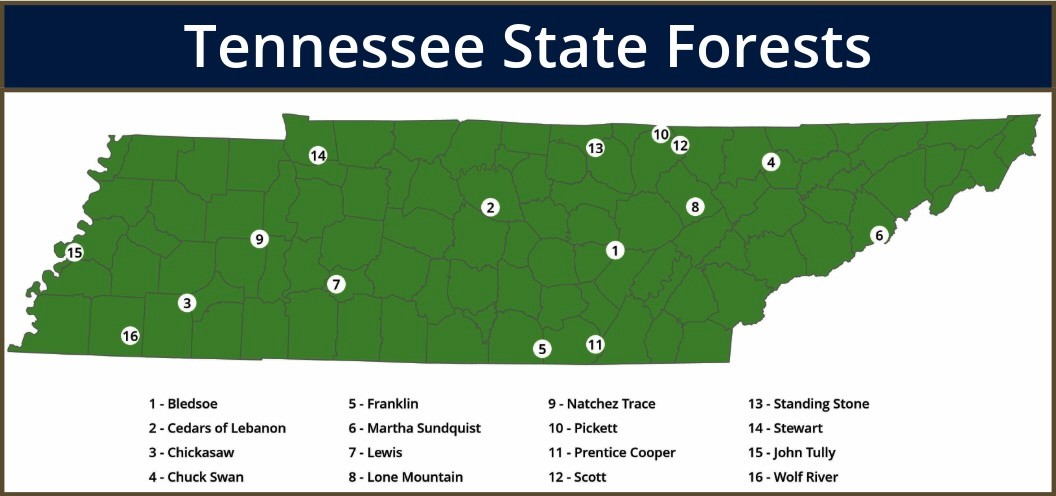State Forests

Tennessee's 16 State Forests cover 171,609 acres and range from mountain coves in the east to bottomlands along the Mississippi River in the west. State Forests are managed for a healthy mixture of natural resources including game and non-game wildlife, and large, high-quality timber. State Forests lack improvements such as inns, golf courses, and restrooms. However, they offer opportunities for hiking, hunting, wildlife watching, and tranquility.
Many State Forest lands were in poor condition when acquired, either eroded or over-harvested. To aid in recovery, some were planted with trees to control erosion. Others regenerated naturally into hardwood forest. Since those early days of stewardship by the state, our State Forests have been thoughtfully protected and managed.

Plan 2020: Harvest Plan for Sustainable State Forests
The Tennessee Department of Agriculture Division of Forestry began intensively managing State Forests in the early 1970s with the goals of regenerating hardwood stands (oak, hickory, maple, etc.) every 80 years and pine stands (predominantly loblolly pine) every 60 years. While the plan was scientifically sound, complete implementation did not occur and resulted in forest stands that are now skewed to mature or over-mature age classes on average. That simply means that on individual forests, too many stands already exceed 80 and 60 years old for hardwoods and pine respectively, and too few stands are in younger age classes. It is important to have a diverse mix of age classes on any given forest to ensure the health, productivity, and sustainability of that forest.
After more than a year of discussion and research, the Division developed and adopted a new forest regeneration plan designed to create healthier individual forests and a healthier forest system. The foundation for Plan 2020: Harvest Plan for Sustainable State Forests is the same as the plan developed in the 1970s-- to regenerate hardwoods at 80 years and pine at 60 years. Another guiding principle incorporated into this new plan addresses the impact on volume of annual growth. Trees, like most living things, grow. The Division is able to determine how much the forests grow each year through continuous inventories. In recent years, the Division harvested about 50% of the forest’s annual growth system wide. When this new plan is implemented, more timber will be harvested with a cap on removals at 70% of annual growth. This means that less volume will be cut than grows every year, yet the harvest rate will result in more age class diversification by creating younger stands.
Another change taking place on State Forests integral to the new harvest plan involves third-party certification. The most desired certification by private landowners in Tennessee is the American Tree Farm System (ATFS). One reason State Forests exist is to demonstrate sound forest management for private landowners. This creates a natural relationship between private owners and the State Forest system. The standards set by ATFS are rigid and ensure that State Forest management practices are environmentally sound and sustainable for years to come.
Plan 2020 was implemented July 1, 2012 with confidence that generations of Tennesseans to come will enjoy the many benefits afforded them by healthy, productive, publicly-owned forests.